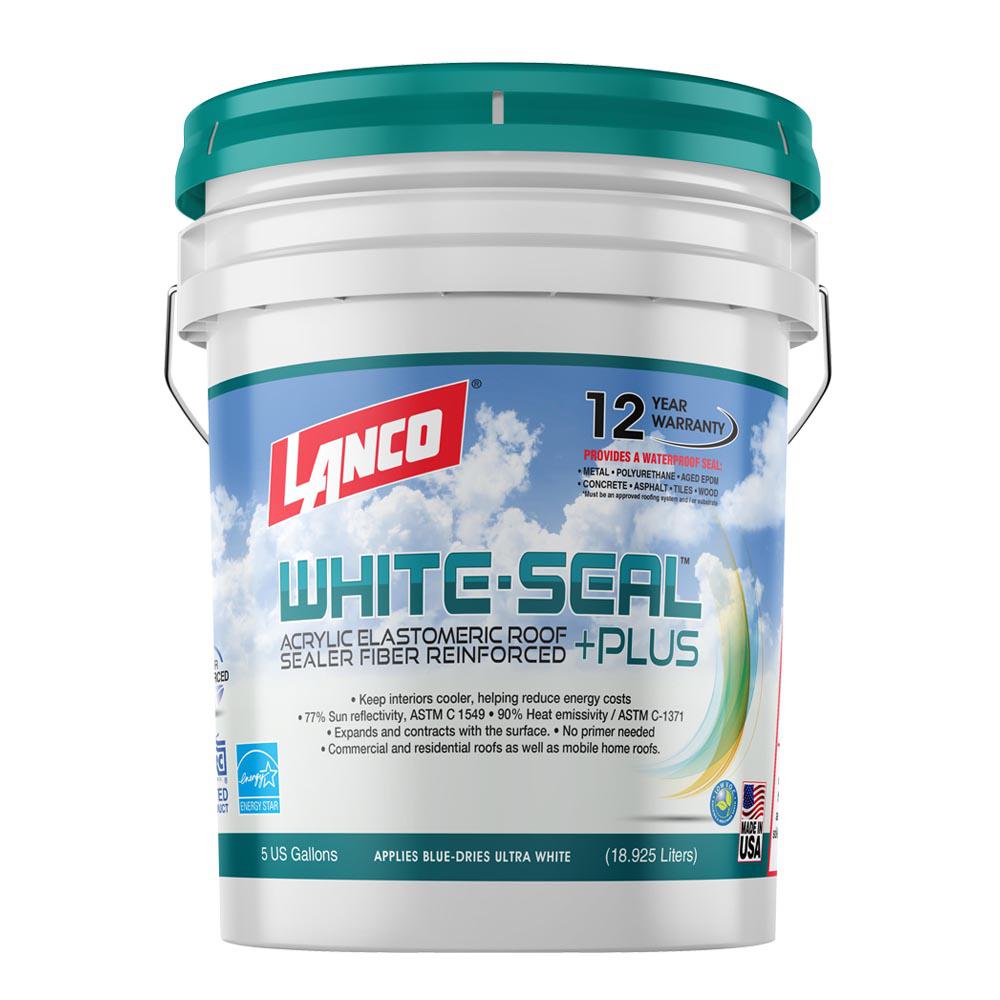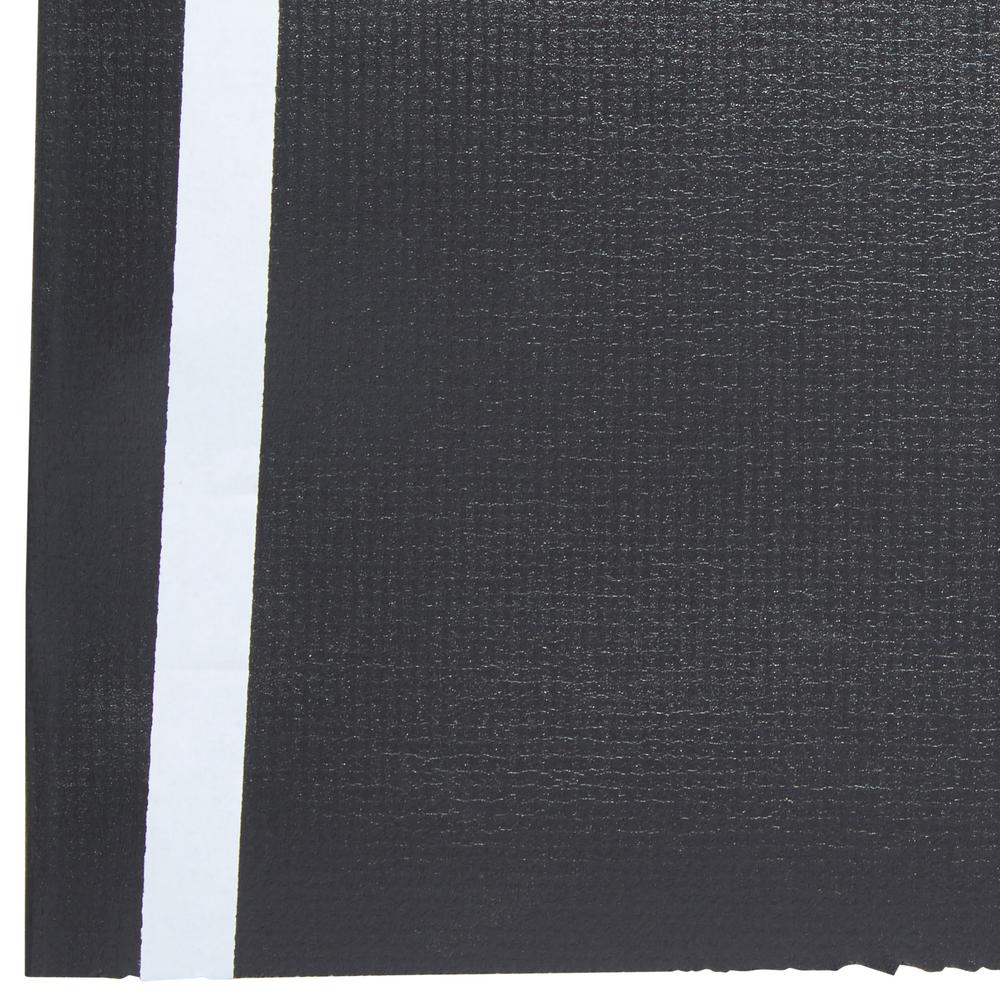Blackjack Silver Seal 300 Home Depot
Myths, Facts, and the Truth About Silicone and Elastomeric Roof Coatings
Before applying, five-gallon containers of aluminum products should be mixed well using a 5-gallon stir stick or a drill with a double-bladed paddle mixer until a consistent silver color is achieved. One gallon cans can be tipped and shaken manually (do not use mechanical paint shakers) before opening, then stirred with a 1-gallon stir stick.
- Bakor 810-20 Plastic Roofing Cement 3.78L. Bakor 810-20 is a plastic cement composed of asphalt, fibre, solvent and fillers. The formulation provides weather resistance, flexibility and ease of application.
- White-Seal 100% Acrylic Elastomeric Reflective Roof Coating with High Dirt Pick-Up Resistance Lanco White-Seal is a 1-component, high performance Lanco White-Seal is a 1-component, high performance rubberized, elastomeric roof sealer. When applied as directed, it will provide a waterproof and weatherproof seal and will not crack, crumble.
- Shop Gaco 5-Gallon Silicone Reflective Roof Coating (50-Year Limited Warranty) in the Reflective Roof Coatings department at Lowe's.com. GacoRoof silicone roof coating creates a seamless membrane to seal and repair existing roofs and permanently protect against leaks, permanent ponding water.
There are two main types of commercial roof coatings we consider at R&A Contracting: acrylic and silicone. Both are good products, but as with many products, acrylic and silicone each have good and bad qualities. We believe in being transparent in presenting any materials for our customers to consider.

Important: sometimes you may see the term ‘elastomeric’ to describe or even label acrylic roof coatings. Elastomeric roof coatings are a type of acrylic, but they are approximately ten times (10x) thicker than most acrylic paints. This means elastomeric can stretch about 300% more than a standard acrylic. If the name elastomeric sounds like the term ‘elastic’, now you know why! For the sake of this article, any time we refer to acrylic roof coatings, we are essentially referring only to elastomeric roof coatings.
Three Common Myths and Misconceptions About Silicone Roof Coatings
Many silicone roof coatings do provide excellent value for commercial roofs. Unfortunately, silicone roof coatings are also the victim of many far-fetched myths and common misconceptions we need to address.
Myth #1: Silicone Roof Coatings last 50 years.
Some less-than-reputable roofing contractors are telling customers around St. Louis that silicone commercial roof coatings will last 50 years. However, our experience and the research proves otherwise. Our team sees silicone roof coatings lose their efficacy on a regular basis.
Fact: The average silicone roof coating lasts around *X number of* years.
All evidence we’ve seen leads us to believe the average lifespan of a silicone roof coating is approximately *X number of* years. There are multiple instances where we saw silicone roof coatings compromise their quality within a matter of years due to normal wear and tear.

Silicone has some serious drawbacks to consider:
- The initial installation costs can be much higher than other commercial roof coatings – a silicon-based commercial roof coating is often at least twice as expensive as an acrylic-based commercial roof coating.
- Silicone roof coatings tend to collect dirt and debris easier than other roof coatings.
- If you need to apply another coat, you have to use a compatible silicone-based coating.
- Silicone roof coatings are messy to install and repair.
- If you have to remove it, silicone roof coatings are stubborn!
- Over time silicone tends to retract from roofing edges and contract into a curl. This means exposed roofing substrates that are no longer waterproof or moisture-proof.
Myth #2: Ponding doesn’t matter when it comes to silicone roof coatings.
Many commercial roofing contractors would lead you to believe silicone roof coatings are the magic bullet for all ponding issues. “It doesn’t matter, just put enough silicone and you’ll never have to worry about ponding ever again!”
Fact: Silicone roof coatings start to absorb water over time, leading to saturation points on commercial roofs.
In fact, silicone roof coatings have one of the highest vapor permeability rates in the commercial roofing industry, often because it is incorrectly applied. (Source) Do silicone roof coatings work to fix ponding issues? Absolutely, they do work, but they must be professionally applied by an experienced and thorough commercial roofing contractor. We just happen to know a company that fits that criteria… Ask R&A Contracting about silicone roof coatings.
Myth #3: Once a silicone roof coating is applied, anything will stick to it.
Again, many contractors believing silicone roof coatings are the ‘silicone silver bullet’. With this myopic approach to commercial roof maintenance and repair, it’s easy not to account for this crucial question: will that component adhere to my new silicone roof coating?
Fact: Silicone does not receive other materials well.
Unfortunately, silicone is highly resistant to any other material sticking to its surface once the applied substance finishes curing. If any repairs are needed for a commercial roof with a silicone coating, it can be very difficult to make any material stick to the silicone surface.
For example, if you have an exposed opening in your roofing surface, simply applying spray foam to make contact with the silicone coating typically does not work. The spray foam (SPF) will not adhere to the silicone surface. You will need to remove the existing silicone so the foam will stick. That also means you may need to replace the now-removed silicone with another layer of silicone.
The Truth About Silicone Roof Coatings
Silicone is generally a one-pass product so you save on man hours with applying it. The reason is silicone roof coatings usually have a higher volume of solid materials inside their composition. This allows us to apply a single coat without worrying about coverage and quality.
While installation (and clean-up!) is messy for silicone roof coatings, it is one of the easiest roof coatings to install. It tends to cure faster than most other materials. Silicone roof coatings are also largely good for the environment since they’re solvent-free and have minimal VOC levels. Silicone roof coatings tend to weather better than most any other roof coating. Since they are moisture-cured and solids-based, silicone can be applied at virtually any temperature and often eliminate any need for primer.
Three Common Myths and Misconceptions About Elastomeric Roof Coatings
Elastomeric roof coatings… be still, our commercial roofing hearts! We’re kidding, but we do have a thing for great elastomeric roof coatings and we’re not ashamed to say it! It’s also why we take great energy and attention to ensure we’re tackling the right myths. Just because we love a product doesn’t mean it’s without its fair share of flaws, rumors, and even flat-out myths!
Myth #1: Elastomeric roof coatings aren’t up to the task of foot traffic and roof debris.
Acrylic is strong, but it can’t be strong enough to withstand foot traffic on flat roofs, right? With acrylics typically being thinner than silicones, this is an easy myth to believe.
Fact: Elastomeric roof coatings are strong and flexible enough to be one of the most durable roof coatings available today.
With its increased thickness and acrylic base, elastomeric roof coatings exceed expectations when it comes to protecting roofing surfaces. As an example, our R&A Contracting team uses Lapolla Industries Thermo-Flex Acrylic Base roof coating (read: Elastomeric) that exceeds performance standards. It carries an industry-leading UV protection that deflects the sun’s harmful UV rays and protects your
Myth #2: Elastomeric roof coatings perform as well as silicone roof coatings when it comes to ponding.
Door Seal Home Depot
Elastomeric is highly popular for commercial roof contractors because of its density, flexibility, and durability. It may seem like an easy fix to simply roll more elastomerics into place to prevent ponding. However, this is an ill-advised solution.
Fact: Ponding is often best fixed by installing spray polyurethane foam (SPF) to level the ponding area and redirect water flow to the appropriate exit points.
R&A Contracting uses spray polyurethane foam, or SPF as it’s fondly called, to elevate low roofing levels. The spray foam expands to fill and level the depression in the roofing surface. The spray foam adheres to virtually any roofing surface to create a seamless covering over the depression. Once the spray foam cures, an elastomerics coating is often applied as further protection against water penetration. This means your formerly popular ponding spot is now on level with the rest of the surrounding roof.
Myth #3: Elastomerics are too fragile to survive extreme weather.
High winds, extreme temperatures, snow, ice, and rain can place a beating on any roofing surface. How do we know if elastomerics are up for the task?
Fact: Elastomerics are monolithic, adhesive, and designed to take on any weather.

Since elastomerics are flexible and acrylic-based, they adhere well to virtually any roofing substrate. By applying elastomerics over spray polyurethane foam, it creates a dual-compound, two-layer roofing solution that is seamless and chemically bonded together. In fact, elastomerics are some of the most well-known roof coatings to withstand hurricane-force winds and debris in the Gulf Coast.
The Truth About Elastomeric Roof Coatings
Elastomeric roof coatings need to be applied in at least two applications, sometimes three in certain situations. Elastomerics are breathable, so they do let some moisture particles through their material but only a minimal amount. Since elastomeric acrylics are typically water-based, they are environmentally safe with low VOC levels. Elastomerics are known for preserving roofs from the long-term damaging effects of thermal heat.
We Install Roof Coatings Across St. Louis

Black Jack Silver Seal 300 Home Depot
When it comes to St. Louis businesses, we’ve got you covered! Our R&A Contracting team works with commercial building owners to find the best commercial roofing solution for each situation. We can work with you to inspect your roof, identify potential problem areas, and create a customized roof maintenance and repair program to keep your roof healthy and strong for years to come.
Home Depot Seal
Your next logical step is to schedule a time for our R&A Contracting team to do an on-site inspection. It’s complimentary and we welcome you to ask any questions you may have about your roof. Follow this link to send us a message and start a conversation today!



